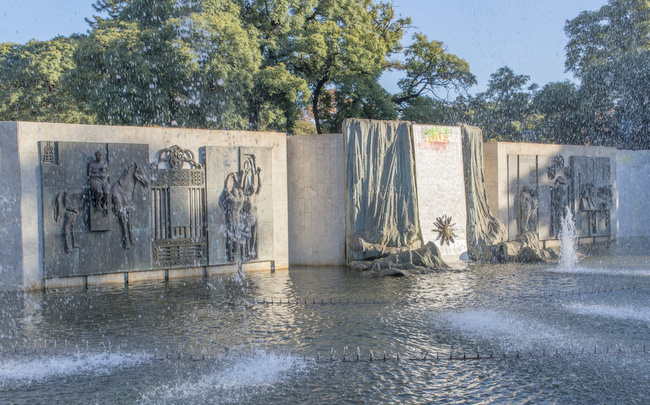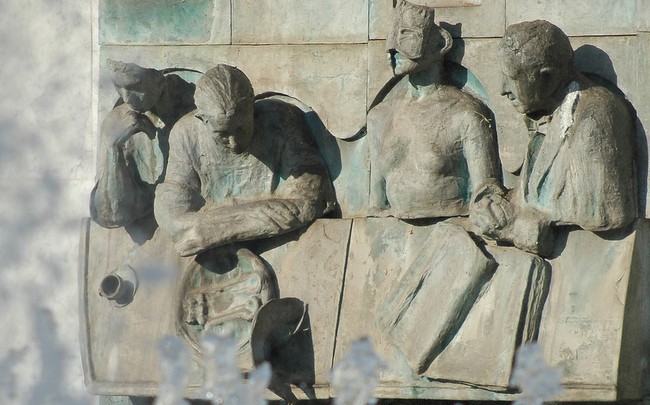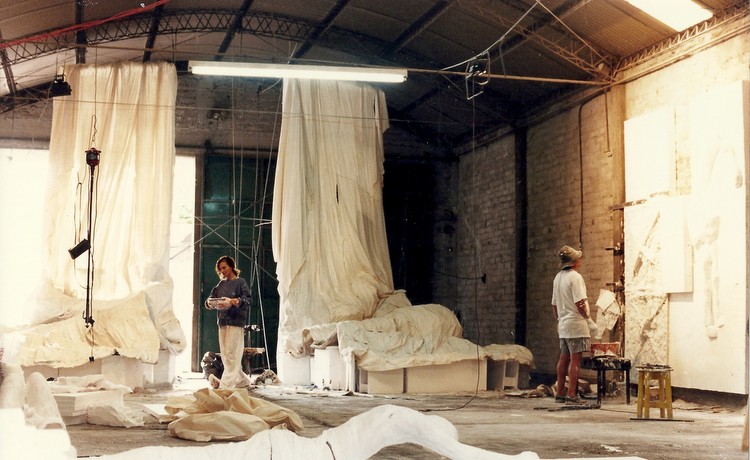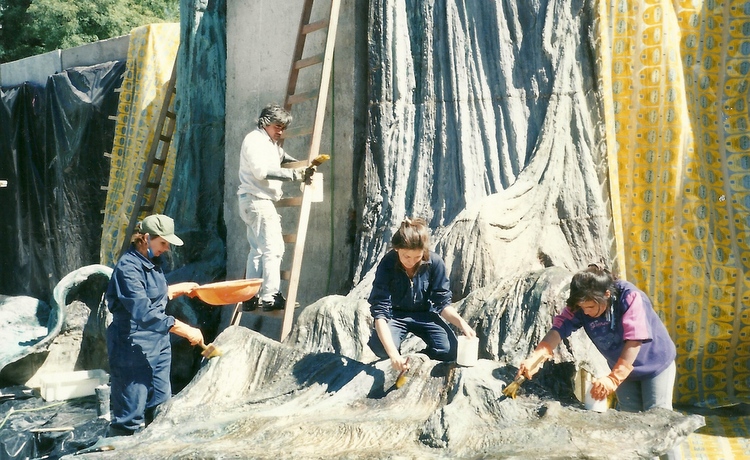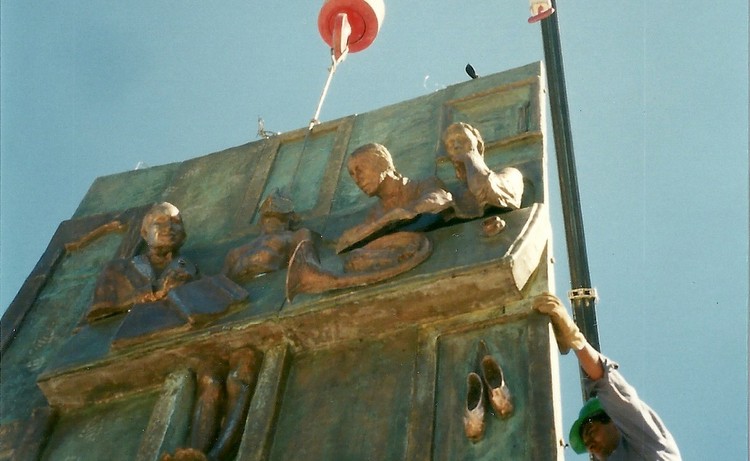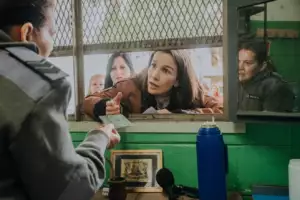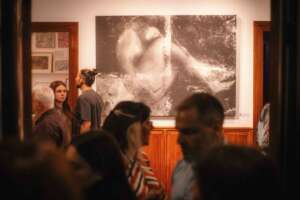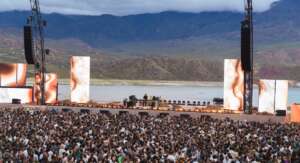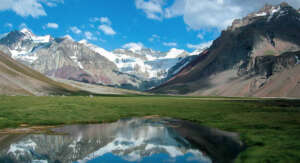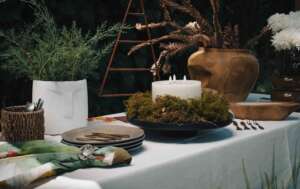When the architect Daniel Ramos Correas designed the Independence Square it was intended to carry out a sculptural frieze, but the work was not materialized until 1995, when after some comings and goings with the sculptor Lorenzo Dominguez, to whom it was commissioned in the first instance- were the artists Eliana Molinelli, Eneida Rosso and Laura Valdivieso who finally won the national competition held in 1994 on the occasion of the reform of the square, declared part of the cultural heritage of the city of Mendoza.
The artist and teacher Laura Valdivieso, director of the Municipal Museum of Modern Art (MMAMM) was then ascribed to the chair of Drawing III in UNCuyo, which was Molinelli the named chair.
«My dad was a founder and Eliana invited me to participate in the project since my father advised us technically. We made three proposals; what we see consists of two murals on the sides of a central sculpture representing a large panel falling in a cascade way, simulating a flag that is lost in the water» she explains.
To make the gypsum and polystyrene models, cut the parts, disassemble and then assemble the mural foundries without welding them-, the three artists challenged the chauvinist prejudices of the time and rented a warehouse in Godoy Cruz, where they worked hardly for just over six months. On May 25th, 1995, was inaugurated the sculptural frieze which is celebrating 20 years and which is called: Freedom, that anonymous heroic deed. It consists of three large pieces of bronze, two large murals with figures in high relief and a great central volume. The brothers Juan Pedro and Antonio Valdivieso and the company Elijah E. Olivera & sons, were also involved in the melting.
From left to right the work suggests a chronological sequence of the history of independence that begins with the reproduction of a petroglyph of indigenous cultures and continues with a woman riding a horse with a crucifix, symbol of evangelization and cross-culturalization. The central body refers to the colonial era with the addition of decorative bars, a typical Spanish architectural element; next, the representation of a man tied up and later released, followed by a family of immigrants in the late nineteenth and early twentieth centuries. Following, the vine and the work as economic transformation of Mendoza, and finally, a tribute to the artists who contributed with their work to the real independence: the cultural one.
«It was a particularly intense experience: there was little time to work and it brought implicitly a considerable scale adaptation composition. We also had to provide several facts before making the works, and anticipate problems for the mounting. Working with the frieze was not only interesting from the aesthetic point of view, but also solving technical solutions during the assembling work. In my case I think that experience has shaped me for the rest of my life» says Laura Valdivieso.
[divider]Brief History of the Square[/divider]
The Independence Square was built in 1863 and went throughout history numerous renovations. In 1941, Daniel Ramos Correas used part of the foundation of the Government House, which would be installed there, to build a basement, where it worked in the beginning, the Museum of Natural Sciences and later, the MMAMM (Mendoza’s Modern Museum of Art) and the Quintanilla Theatre, settled in the north wing of the building. With that began the remodeling project for the realization of a sculptural frieze sanmartiniana subject, he commissioned the sculptor Lorenzo Dominguez, author of the monument to San Martin and O’Higgins of Chile Square, that unknown circumstances that did not get to materialize. In late 1980 there was another reform by Esteban Dumesnil, who installed the ornamental fountain and generated revenues Sarmiento and Mitre streets.
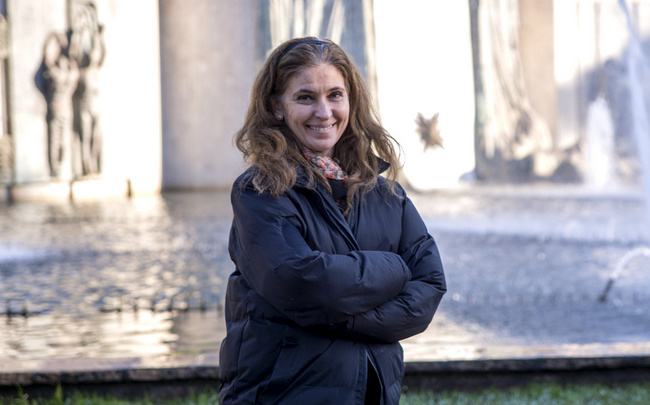
[authorbox authorid=»29″ title=»123456789″]


